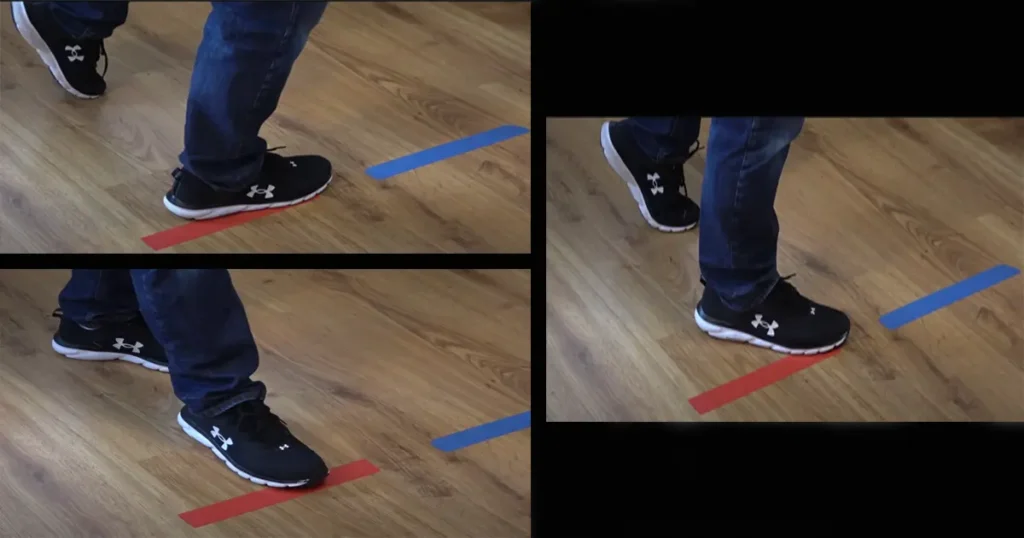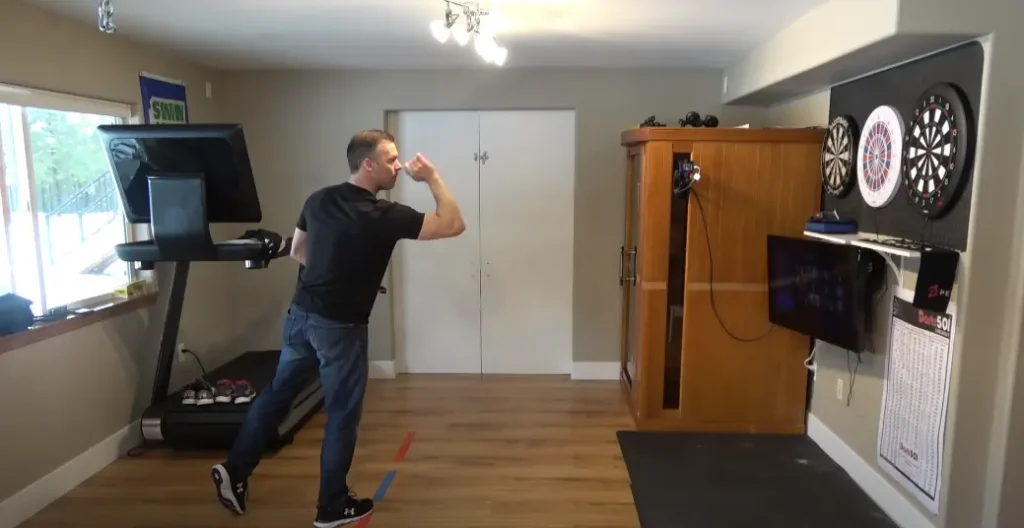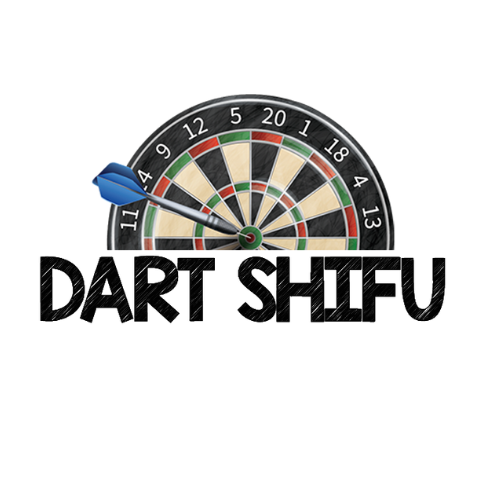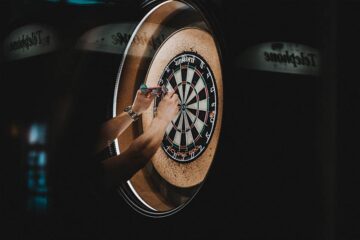To improve your darts stance, focus on maintaining a steady and balanced position throughout your throw. Developing a strong and stable foundation will help improve your accuracy and consistency.
When it comes to playing darts, having the right stance is crucial for accuracy and consistency in your throws. A proper stance provides a stable base to execute your shots with precision. By following a few simple steps, you can improve your darts stance and enhance your overall performance.
We will discuss the key elements of a solid darts stance and provide useful tips to help you perfect your positioning. Whether you are a beginner or an experienced player looking to refine your technique, these tips will help you get the most out of your darts game. So, let’s dive in and explore how you can improve your darts stance for better results on the board.
Basics of Stance
Dart stance is the foundation of a good throw and consists of three components, foot placement, balance, and body posture. Understanding the basics of these components is essential to achieving a solid and consistent stance.
Feet Placement

A stable and balanced dart stance is vital for accuracy and consistency. Ensure your feet are shoulder-width apart, distributing weight evenly. For sidearm throwers, angle your feet towards the board; for upright throwers, keep your feet closer.
The distance between feet impacts stability—too close affects balance and too far undermines posture. Experiment and adjust to find a stable stance tailored to your throwing style, enhancing accuracy and consistency.
Steady and Balance

Balancing your stance is crucial for a consistent dart throw. Ensure a stable and balanced posture, distributing weight evenly between feet. Leaning issues often stem from improper foot placement or lack of focus.
Maintain an upright posture, centering weight between feet, to correct this. Proper follow-through is also vital—practice extending your arm after releasing the dart to avoid throwing off your balance and impacting accuracy.
Body Posture

Achieving a relaxed dart throw requires proper body alignment. Position your throwing shoulder directly in line with the target and use the non-throwing arm for balance. Avoid tension by maintaining a relaxed grip, steering clear of excessive tightness in the forearm.
Execute a smooth, fluid motion, avoiding jerks or twitches. Incorporate pre-throw stretches, breaks for muscle relaxation, and proper posture to prevent strain and tension in the arm and shoulder.
Choosing The Right Stance
There are various types of stances used in dart throwing, each with its own strengths and weaknesses. Some of the most common dart stances include the following:
Square Stance

A square stance is a technique used by players to position their bodies and feet in a way that is perpendicular to the dartboard. This stance involves standing with both feet shoulder-width apart and facing directly towards the board, with the toes pointing forward, and the body positioned at a right angle to the throwing line.
The square stance is one of several different stances that players can use in darts, and it is often chosen because it provides a stable and balanced platform for throwing the dart. This stance can be particularly helpful for players who are just starting out, as it helps them to focus on their aim and technique without having to worry about balance or positioning.
Open Stance

An open stance refers to a throwing stance where the player’s lead foot (the foot closest to the throwing line) is positioned to the side of the throwing line, while their back foot is positioned slightly behind the throwing line.
This stance allows the player to have a more open throwing arm and shoulder, which can help with aiming and accuracy. It also allows for a smoother throwing motion and can help the player maintain balance throughout the throw. Many professional darts players use an open stance as part of their technique.
Close Stance

In a close stance, the player’s leading foot (the foot closest to the dartboard) is placed slightly forward of the other foot. In a close stance, the player’s leading foot (the foot closest to the dartboard) is placed slightly forward of the other foot. This helps the player to maintain a stable base and to lean forward slightly, allowing them to throw the dart with greater accuracy and control.
Players may choose to use a close stance if they feel more comfortable or if it helps them improve their accuracy.
Modified Stance
Modified Stance in darts refers to a stance that is adjusted or altered from the standard or natural stance of the player to suit their preferences or to address a particular issue. This could involve changing the position of the feet, adjusting the body angle, or modifying the position of the throwing arm or hand.
The modified stance is usually adopted to achieve a better balance, stability, or aim, depending on the player’s individual needs and playing style. Some players may use a modified stance for a particular dart or shot, while others may use it consistently throughout the game.
Techniques To Improve Darts Stance
Improving your darts stance is a crucial step towards enhancing your accuracy and overall performance. A solid stance provides a stable foundation, allowing you to aim and throw with greater control.
Balance And Stability
In darts, having a solid foundation of balance and stability is crucial for consistent and accurate throws. Achieving the right stance can significantly improve your game. Let’s dive into the key elements underpinning balance and stability in darts.
Weight Distribution
Proper weight distribution is essential for a stable throwing stance. Spread your weight evenly on both feet.
- Ensure your body weight is centered between your front and back foot.
- Avoid leaning too far forward or backward.
Gripping The Dart
How you grip the dart impacts your balance and stability. Hold the dart in a comfortable and secure manner.
- Maintain a relaxed grip to allow for fluid movement.
- Position your fingers on the dart barrel for control and accuracy.
Gentle Movement
Smooth and controlled movements are key to maintaining balance during your throw.
- Avoid sudden jerky movements that may throw off your aim.
- Focus on a gentle release of the dart to ensure accuracy.
Aiming And Targeting
When it comes to improving your darts stance, aiming and targeting play a crucial role in determining your accuracy and success on the dartboard. A solid understanding of eye dominance, focus on the target, and the effective use of sights can greatly enhance your ability to hit the bulls-eye consistently. Here, we will explore these key factors that can help you improve your aim and target while playing darts.
Eye Dominance
Eye dominance refers to the eye that your brain naturally prefers to use when aiming at a target. Determining your dominant eye is essential for developing a stable and reliable stance in darts. To find out which eye is your dominant eye, follow these simple steps:
- Extend your arm straight in front of you, holding your thumb up.
- Choose a small object in the distance and keep both eyes open.
- Slowly bring your thumb towards your face while continuing to focus on the distant object.
- At a certain point, your thumb will naturally move into alignment with your dominant eye, while the object you initially focused on will appear to shift away.
- Repeat this process a few times to confirm your dominant eye.
Once you have determined your dominant eye, you can position your body and align your stance accordingly. For example, if you are right-eye dominant, align your right side, including your shoulder, hip, and foot, towards the target.
Focus On The Target
While throwing darts, it is crucial to maintain a laser-sharp focus on the target. By concentrating solely on the specific section of the board you wish to hit, you minimize distractions and improve your chances of hitting your desired spot accurately. To enhance your targeting focus:
- Visualize your dart landing in the desired area of the dartboard before throwing.
- Avoid looking at other players or objects that may divert your attention.
- Keep your eyes fixed on the target throughout your throwing motion.
- Develop a consistent rhythm and routine in your approach to help maintain focus.
Using Sights
One effective technique for improving your aim is the use of sights. Sights are points or reference marks that you can establish on the dartboard to aid in targeting specific areas. Here are a few sight methods that you can adopt:
| Sight Method | Description |
|---|---|
| The Double Top Sight | Focus on aligning your throwing hand with the double top area of the board. |
| The T20 Sight | Aim for the triple 20 segment by visually lining up your eye, dart, and target. |
| The Bull’s Eye Sight | Direct your gaze towards the bull’s eye in the center of the dartboard and use it as a reference point for accurate targeting. |
Experiment with different sight methods and find the one that works best for you. Remember, consistent practice incorporating these techniques into your gameplay will help develop muscle memory and improve your overall aiming and targeting skills in darts.
Practicing Your Stance
In order to improve your darts stance, it’s crucial to dedicate time to practicing and refining your technique. The way you stand can greatly impact your throw, so honing your stance through regular practice is essential. Here are some effective methods for practicing your stance to enhance your darts performance.
Drills And Exercises
Engaging in specific drills and exercises can help you develop a solid and consistent darts stance. Incorporate balance exercises such as standing on one leg to improve stability and body control. Additionally, practice throwing from various positions to enhance adaptability and precision.
Video Analysis
Video analysis can provide valuable insights into your darts stance. Record your throw from different angles and review the footage to identify any inefficiencies or areas for improvement. By analyzing your technique, you can make adjustments to enhance your stance and throwing accuracy.
Partner Feedback
Soliciting feedback from a practice partner can offer fresh perspectives on your darts stance. Have your partner observe your stance and provide constructive criticism. This external input can help you identify any overlooked flaws and make the necessary adjustments to refine your stance.
Common Mistakes To Avoid
When it comes to improving your darts game, having the right stance is crucial. However, many players often make common mistakes that can hinder their performance. By being aware of these mistakes and correcting them, you can take your dart game to the next level.
Leaning Too Far Forward
Leaning too far forward is a common mistake that can throw off your balance and accuracy when throwing darts. It can cause you to overextend your reach and put unnecessary strain on your back.
To avoid this, make sure to keep your upper body upright and your weight evenly distributed between both feet. This will help you maintain stability and control throughout your throw.
Overextending The Arm
Overextending the arm can lead to inconsistent throws and reduced accuracy. When you reach too far forward with your throwing arm, it can cause your darts to veer off target.
Instead, focus on keeping your elbow at a comfortable angle and bringing the dart back to your eye level before releasing it. This will ensure a more controlled and precise throw.
Slouching Or Hunching
Slouching or hunching can negatively impact your posture and throw off your aim. It can also lead to discomfort and fatigue, making it harder to maintain your concentration.
To avoid this, stand with your shoulders back and your spine straight, maintaining a relaxed yet upright posture. This will help you stay comfortable and focused throughout your game.
Adjustments For Different Dart Techniques
Improving your darts stance is essential for enhancing your accuracy and consistency on the dartboard. However, it’s important to understand that there isn’t a one-size-fits-all approach when it comes to the proper stance.
The adjustments you make will depend on your throwing style, grip variation, and distance and angle to the board. Here, we will delve into each of these aspects to help you optimize your stance for your unique dart technique.
Throwing Style
Your throwing style is a key factor that influences your dart stance. Whether you have an upright throw or a more arched delivery, it’s important to adapt your stance accordingly. If you have an upright throw, where your shoulder, elbow, and arm are aligned, you will want to stand with your feet shoulder-width apart and your body facing the dartboard directly.
For those with a more arched throw, where your arm swings in an arc motion, a sideways stance may be more suitable. Stand with your feet at an angle to the throwing line, with your dominant foot slightly in front, providing stability and a clear path for your arm swing.
Grip Variation
The way you grip the dart can have a significant impact on your stance and overall darting technique. Whether you use a pencil grip, claw grip, or any other variation, it’s crucial to find a stance that complements your grip. For instance, if you use a pencil grip, which involves holding the dart like a writing utensil, a more centered stance is recommended.
Keep your body aligned with the board and your arm extended straight towards the target. On the other hand, if you use a claw grip where your fingers hold the dart in a claw-like manner, a slightly sideways stance may provide better control and stability.
Distance And Angle
The distance you stand from the dartboard, as well as the angle at which you face it, can greatly influence your dart stance. While there is no exact science to determining the optimal distance and angle, it is generally recommended to stand about seven to nine feet away from the board.
You can experiment with different distances to find what works best for you. Additionally, the angle at which you face the board should be determined by your dominant eye. If you are right-eye dominant, standing slightly to the left of the throwing line will allow for better sight alignment. Conversely, if you are left-eye dominant, standing to the right will be more beneficial.
Improving Mental Focus
Improving mental focus is critical to excel in darts. Your mental state greatly impacts performance.
Visualization Techniques
Visualize yourself hitting the bullseye with every throw. Picture the perfect stance and release.
Breathing Exercises
Practice deep belly breathing to calm nerves and enhance concentration. Inhale for 4 counts, exhale for 6.
Positive Affirmations
Repeat affirmations like “I am a skilled darts player” to boost confidence. Affirm success and channel positivity.
Maintaining Consistency
Improving your darts stance is crucial for maintaining consistency. By focusing on positioning your body correctly, you can enhance your accuracy and overall performance on the dartboard.
Maintaining consistency in your darts stance is crucial for improving your overall accuracy and performance. By focusing on key aspects such as practice routine, routine evaluation and adjustment, and pre-game rituals, you can enhance your gameplay significantly.
Practice Routine
Implement a structured practice routine to refine your darts stance regularly.
– Begin each session with a 5-minute warm-up to prepare your body.
– Focus on basic throwing techniques and foot placement during practice.
– Incorporate various distance challenges to improve your precision.
Routine Evaluation And Adjustment
Regularly assess your practice sessions and make necessary adjustments for optimal performance.
– Analyze your throwing technique and stance after each practice.
– Identify areas of improvement and modify your stance accordingly.
– Seek feedback from experienced players to enhance your consistency.
Pre-game Rituals
Develop pre-game rituals to mentally prepare and maintain consistency in your darts stance.
– Establish a calming routine before each match to focus your mind.
– Visualize successful throws and positive outcomes to boost confidence.
– Engage in breathing exercises to center yourself and maintain composure.
Consistency in your darts stance is key to becoming a skilled player. By integrating these strategies into your practice and gameplay, you can elevate your performance and accuracy on the dartboard.
Wrapping Up
To sum it up, improving your darts stance is essential for enhancing your overall game performance. By following these tips and techniques, you can achieve a more balanced and stable stance, resulting in improved accuracy and consistency. Remember to focus on proper alignment, foot placement, body positioning, and maintaining a relaxed yet engaged posture.
With practice and perseverance, you’ll master your darts stance and elevate your darting skills to new heights. Start implementing these tips today and watch your game soar!
FAQs
What’s the ideal foot position for a darts stance?
While there’s some flexibility, start with these fundamentals:
- Shoulder-width apart: Gives you a stable base.
- Dominant foot forward: This aligns your throwing arm.
- Toes pointed toward the board: Offers natural body alignment.
- Slight angle: Experiment turning your front foot slightly outward for better comfort.
How important is weight distribution in a darts stance?
It’s key for consistency and preventing fatigue. Aim for:
- Front foot: Carries about 60-70% of your weight for stability.
- Back foot: Offers balance; the heel can be slightly lifted.
- Avoid swaying: Keep your weight steady for a smooth throw.
Should I stand sideways or face the board directly?
A side stance is most common. It allows for a natural throwing motion and reduces body obstruction. However, if a slight angle or a more front-facing stance feels comfortable, there’s no single “right” way.
How should I position my upper body for a good stance?
Focus on:
- Straight spine: Avoid slouching, which compromises stability.
- Lean forward slightly: A subtle lean from the ankles helps align your throw.
- Chest facing the board: This keeps your throwing motion on track.
Are there common stance mistakes to watch out for?
Yes! Avoid these:
- Lifting your back foot off the ground: This throws off your balance.
- Leaning too far forward: You might lose control of your throw.
- Keeping your body rigid: A little flexibility allows for a natural throwing motion.


